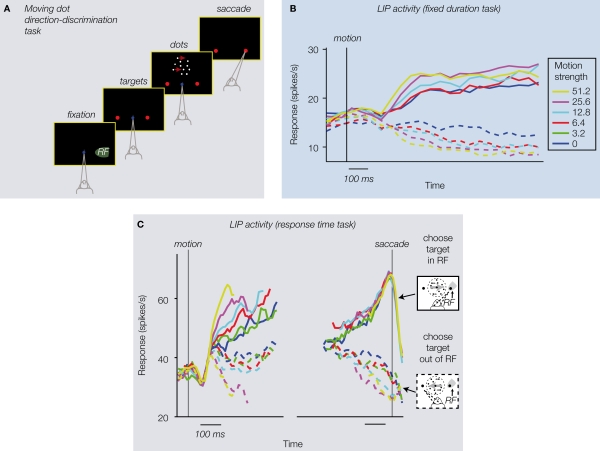Figure 1.
Visual motion direction discrimination task. (A) Task protocol: (i) monkey fixates a central fixation point; (ii) choice targets are presented, one in the response field (RF) of the LIP neuron under study, and the other well outside it; (iii) monkey views random dot motion, decides which direction was presented, and communicates its choice by making an eye movement to the corresponding choice target. (B) Fixed duration version of the direction discrimination task (Shadlen and Newsome, 2001): The moving dots are presented for a short, experimenter-controlled duration. The monkey watches the entire moving dot presentation and is them allowed to make its eye movement response (saccade) after a “go” signal (removal of fixation point). Bold (dashed) traces: LIP activities with saccades into (away from) neuron's RF; different colors indicate different motion strengths (see legend). (C) LIP activity during a response-time version of the direction discrimination task (Huk and Shadlen, 2005; Roitman and Shadlen, 2002). Monkey views dots until they have made their decision, at which point they can interrupt dot viewing by making a saccadic eye movement. This provides a measure of the decisions accuracy (correct or incorrect) as well as the time it took. Left panel, LIP response as a function of time relative to the onset of the moving dot display. Right panel, same LIP responses aligned to the time of the saccadic response. Otherwise same format as panel (B). Adapted from Mazurek et al. (2003), with permission; original data from Shadlen and Newsome (2001) (B), and Roitman and Shadlen (2002) (C).

